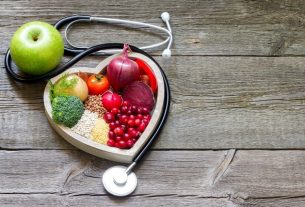Cholesterol is a type of fat found in the body, being essential for the functioning of brain cells, nerves, muscles, skin and liver, for example, in addition to acting in the formation of hormones and vitamin D. However, excess cholesterol may cause some health problems.
There are several types of cholesterol, such as LDL, or “bad” cholesterol, VLDL, non-HDL and IDL, which are related to an increased risk of developing cardiovascular diseases, and HDL, or “good” cholesterol, which has a antioxidant and anti-inflammatory, helping to prevent the development of heart disease.
Cholesterol is measured through a blood test, known as a lipidogram, which considers the values of LDL, HDL, VLDL cholesterol fractions, total cholesterol, in addition to triglycerides. Understand better how the lipid profile is performed.

Types of cholesterol
Depending on their functions, the types of cholesterol are:
1. Colesterol HDL
HDL cholesterol, also known as “good” cholesterol, removes fat molecules from within the blood vessels and directs them to the liver, where they are metabolized and eliminated from the body. Understand better what HDL cholesterol is and what it is for.
In addition, HDL cholesterol also has anticoagulant, anti-inflammatory and antioxidant effects, and helps in the production of hormones, bile and vitamin D. Thus, HDL cholesterol helps prevent the development of diseases, such as heart attack, atherosclerosis, stroke and thrombosis, for example.
2. Colesterol LDL
LDL cholesterol, popularly known as “bad” cholesterol, is important for the proper functioning of the body, when it is within desirable values, because it contributes to the formation of hormones, vitamin D and bile in the body. Find out more about what LDL cholesterol is.
However, when in excess, LDL cholesterol can accumulate within blood vessels, favoring the formation of fatty plaques that increase the risk of cardiovascular diseases, such as heart attack and stroke.
3. Colesterol VLDL
VLDL cholesterol is a very low density lipoprotein produced by the liver and released into the bloodstream, whose function is to transport triglycerides and cholesterol to tissues to be stored and used as a source of energy. Find out more about VLDL cholesterol.
However, VLDL is considered a bad type of cholesterol, because when its levels are high, it can be deposited on the walls of blood vessels, forming fatty plaques that can impede the passage of blood, increasing the risk of cardiovascular diseases.
4. Non-HDL cholesterol
Non-HDL cholesterol is equivalent to the value of total cholesterol minus HDL cholesterol, thus being composed of the sum of LDL, VLDL and IDL cholesterol. Therefore, non-HDL cholesterol is a good tool for assessing cardiovascular risk.
Research has shown that non-HDL cholesterol can help more in assessing cardiovascular risk than LDL cholesterol, as it includes all the lipoproteins that can cause the formation of plaque in the arteries.
5. Colesterol IDL
IDL cholesterol is formed from the removal of triglycerides from VLDL cholesterol molecules, which is subsequently removed from the liver or transformed into LDL cholesterol. IDL cholesterol has an atherogenic action and may increase the risk of cardiovascular diseases.
6. Colesterol total
Total cholesterol is the sum of HDL, LDL and VLDL cholesterol fractions in the blood, and is considered high when levels are above 190 mg/dL.
High total cholesterol can be caused by a sedentary lifestyle, excessive consumption of alcoholic beverages and fatty foods. Furthermore, it can also arise due to diabetes, hypothyroidism, familial hypercholesterolemia and the use of some medications, such as corticosteroids and antiretrovirals.
How to measure
The way to measure cholesterol is through a lipidogram, an exam carried out by collecting blood in a laboratory and which evaluates the amount of LDL, HDL, VLDL and total cholesterol.
In addition, the lipid profile also assesses the levels of triglycerides, a type of fat produced by the liver, which transforms calories from food consumed in excess into fat. Understand better what triglycerides are and what they are for.
To take the exam, you must maintain a normal eating routine and lifestyle. Some laboratories do not recommend fasting while others may request a 12-hour fast.
Do you have questions about your exam results?
Normal cholesterol values vary depending on the cholesterol fraction and the person’s age, as follows:
- Colesterol total: less than 190 mg/dl in adults;
- Colesterol LDL: less than 130 mg/dl in adults with low cardiovascular risk;
- Colesterol HDL: above 40 mg/dl in adults.
Non-HDL cholesterol should be less than 160 mg/dl in adults at low cardiovascular risk. Know all the values for LDL, HDL, VLDL and total cholesterol.
cholesterol calculator
To find out if your cholesterol is good, enter your test results into the calculator below:
High cholesterol symptoms
High cholesterol usually does not cause symptoms. However, excess cholesterol can cause the accumulation of fat in the liver, causing symptoms such as:
- Fat balls in the eyes;
- Hard lumps on the Achilles tendons, hands or elbows;
- Swollen belly.
In addition, high cholesterol can also cause the formation of a gray circle around the iris of the eyes. Know all the symptoms of high cholesterol.
What can high cholesterol cause?
When left untreated, high cholesterol can cause cardiovascular diseases, such as atherosclerosis, coronary artery disease, heart attack, high blood pressure or stroke. Better understand the risks of high cholesterol.
How to lower cholesterol
Some ways to lower cholesterol include taking medication, diet, lifestyle changes, and using home remedies.
1. Medicines
Some medications, such as simvastatin, atorvastatin, ezetimibe and bezafibrate, may be prescribed by your doctor to lower total cholesterol, LDL cholesterol, VLDL cholesterol and triglycerides. Check out other remedies recommended for lowering cholesterol.
2. Diet
The cholesterol-lowering diet should be followed by prioritizing the consumption of fruits, vegetables and whole grains, as they are rich in fiber that helps reduce the absorption of total cholesterol at the intestinal level. See all foods allowed in the high cholesterol diet.
Furthermore, during the high cholesterol diet, it is also important to avoid consuming alcoholic beverages and foods rich in saturated fat and trans fat, such as pizza, bacon, sausage and hamburgers, for example.
3. Home remedies
Some home remedies, such as garlic water, turmeric and dandelion tea, reduce the absorption of fat, increasing its excretion in the feces or preventing its oxidation, thus helping to lower cholesterol. Discover other home remedies to lower cholesterol.
4. Lifestyle changes
Practicing physical exercise regularly, at least 3 times a week, such as running, dancing, wrestling, weight training or pilates, avoiding smoking and maintaining an adequate weight, are lifestyle changes that help reduce LDL cholesterol, reducing the risk of developing of cardiovascular diseases.
How to increase “good” cholesterol
Just as to reduce “bad” cholesterol, LDL, to increase “good” cholesterol, HDL, you must also practice physical activity regularly; lose weight if you are above your ideal weight; maintain a healthy and varied diet; and avoid smoking. See other tips for increasing “good” cholesterol.

Sign up for our newsletter and stay up to date with exclusive news
that can transform your routine!
Warning: Undefined array key "title" in /home/storelat/public_html/wp-content/plugins/link-whisper-premium/templates/frontend/related-posts.php on line 12
Warning: Undefined array key "title_tag" in /home/storelat/public_html/wp-content/plugins/link-whisper-premium/templates/frontend/related-posts.php on line 13



